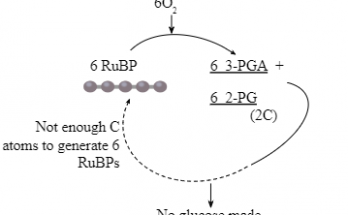Reasons for the Absence of Double Fertilisation in Gymnosperms
Double Fertilization is a characteristic feature of angiosperms (flowering plants) but is absent in gymnosperms. The absence of this process in gymnosperms can be attributed to several key differences in their reproductive strategies and structures compared to angiosperms. Below are the detailed points explaining why gymnosperms do not exhibit double fertilisation:
Reproductive Structures:
- Flowers and Cones: Angiosperms possess flowers that facilitate the interaction between male and female gametophytes. In contrast Gymnospermslack flowers and instead have separate male and female structures known as cones.
- Ovaries: The presence of ovaries in angiosperms allows for the retention and development of the fertilised egg and the formation of endosperm after double fertilisation. Gymnosperms do not have ovaries; their seeds are developed from ovules exposed on the scales of female cones.
Pollination and Fertilisation Mechanisms:
- Wind Pollination: Gymnosperms primarily rely on wind to transport pollen to the female cones, a less targeted and precise process compared to the pollination mechanisms in angiosperms, which often involve insects or other vectors.
- Single Fertilisation Event: In gymnosperms, the fertilisation process involves only one sperm nucleus from the male gametophyte fertilising the egg, leading to the formation of a zygote without the additional step of forming a triploid endosperm.
Gametophyte Development:
- Size and Complexity: The female gametophyte in gymnosperms is larger and retains more complexity compared to angiosperms. This structure is capable of providing sufficient nutrients to the developing embryo, negating the need for an additional nutritive tissue like the endosperm.
- Absence of a Second Sperm Nucleus: Gymnosperms produce only one sperm nucleus per pollen tube, whereas angiosperms produce two, enabling one to fertilise the egg and the other to combine with the central cell to form endosperm.
Evolutionary Adaptations:
- Evolutionary Timing: Gymnosperms evolved earlier than angiosperms and have adapted to their environments without the need for double fertilisation. Their reproductive strategies have been successful in ensuring species survival and reproduction without the complexity of double fertilisation.
- Environmental Suitability: The environments in which gymnosperms thrive have shaped their reproductive processes, favouring simpler and more direct mechanisms that are effective under specific ecological conditions.
Nutritional Provisioning:
- Internal Nutrient Stores: The female gametophyte in gymnosperms is capable of producing and storing nutrients internally, which supports the embryo directly. This differs from angiosperms, where the endosperm formed through double fertilisation acts as the primary nutritive tissue for the developing embryo.
In summary, the absence of double fertilisation in gymnosperms is primarily due to their differing reproductive structures, simpler fertilisation mechanisms, and evolutionary history that have led to adaptations suitable for their survival and propagation without the need for the complex process of double fertilisation found in angiosperms.
Also Check – 10 Key Differences Between Angiosperms and Gymnosperms
Also Check – “Pollination is Prerequisite for Fertilization in Flowering Plants” Explain
Also Check – 9 Important Differences between Pollination and Fertilization


One Comment on “Why is Double Fertilization in Gymnosperms absent ?”